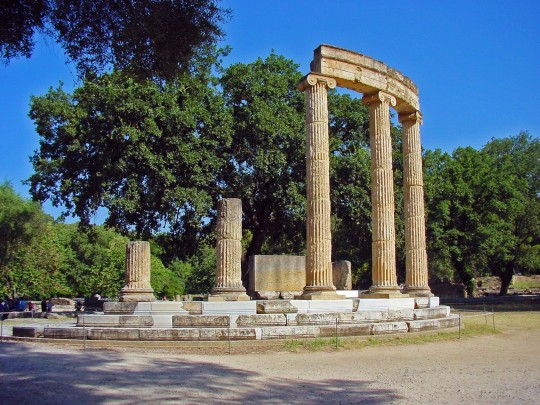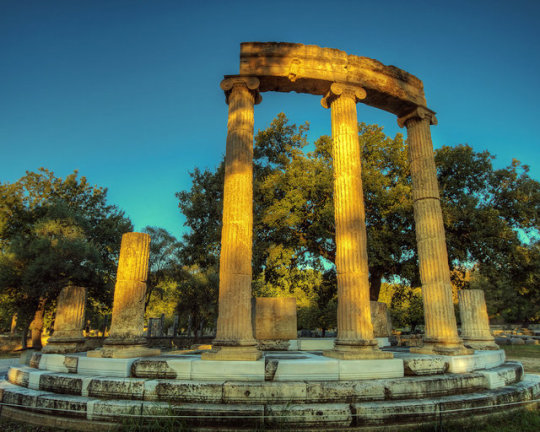#philippeion
Text
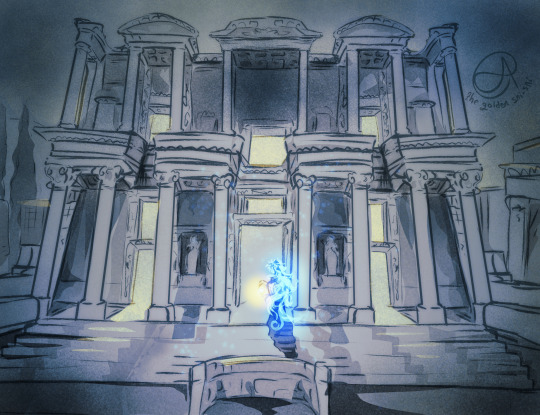
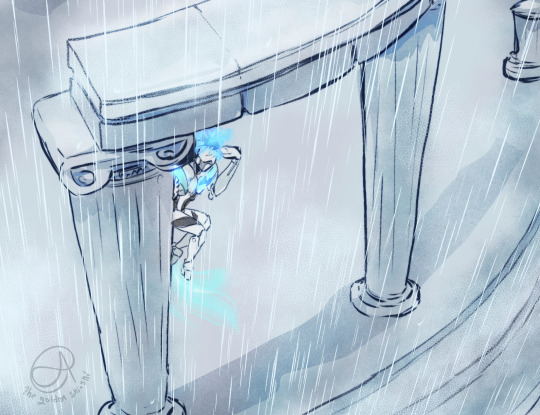
More architecture/ atmosphere studies, this time featuring Ignihyde.
For those interested my references are: Celsus Library in Ephesus (feat Idia) and the Philippeion in Olympia (feat Ortho)
I've done similar sets with Octavinelle and another with Savanaclaw
#twisted wonderland#twst#disney#disney twisted wonderland#ortho shroud#twst ortho#idia shroud#twst idia#celsus library#ephesus#philippeion#olympia#greek architecture#architecture#Seriously though#these may be some of my favorites
541 notes
·
View notes
Text

The Philippeion,Olympia. Rconstruction, interior view of statues of Phillip's family including Alexander.
3 notes
·
View notes
Text
Welterbe (auf)gespürt und (er)fahren – GR – Archäologische Stätte von Olympia
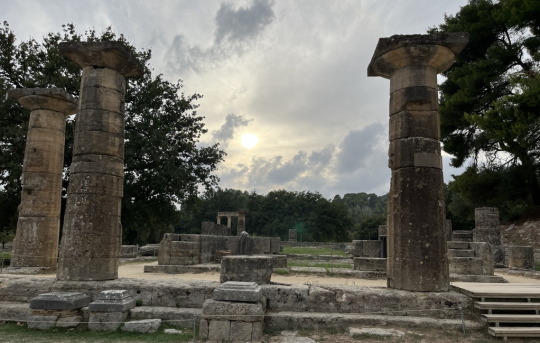
Als zweites Welterbe in Griechenland steht das antike Olympia auf dem Plan. Bis jetzt war mir gar nicht so bewusst, dass das berühmte Stadion nur einen kleinen Teil der Stätte ausmacht und Olympia ein heiliger Ort mit einem beeindruckenden großen Tempelareal war und darin ein Weltwunder der Antike besaß.
Die archäologische Stätte von Olympia steht seit 1989 auf der UNESCO-Welterbeliste. Malerisch gelegen in einem Tal auf dem Peloponnes am Zusammenfluss der Flüsse Alpheios und Kladeos war der Ort seit prähistorischer Zeit besiedelt. Im 10. Jahrhundert v. Chr. wurde Olympia zu einem Zentrum der Zeus-Verehrung. Der heilige Hain (Altis) als Zentrum des Heiligtums besaß eine der höchsten Konzentrationen von Meisterwerken der antiken Mittelmeerwelt. Viele gingen verloren, darunter die Kultstatue des Zeus aus Gold und Elfenbein, eines der sieben Weltwunder der Antike. Doch einige Meisterwerke sind erhalten geblieben, wie Bronzen, Skulpturen und Friese aus dem Zeustempel und der berühmte Hermeskomplex von Praxiteles. Große Künstler wie Pheidias haben diese Werke geschaffen und sie zeugen bis heute von deren persönlicher Inspiration und Kreativität. Die Denkmäler von Olympia hatten in der Folge europaweit beträchtlichen Einfluss. Der Zeustempel, erbaut zwischen 470 und 457 v. Chr., war Modell für die großen dorischen Tempel, die in Süditalien und Sizilien errichtet wurden und die um 420 v. Chr. geschaffene Nike von Paionios beeinflusste die neoklassizistische Kunst des 19. Jahrhunderts. Ab 776 v. Chr. wurden in Olympia aller vier Jahre Sportwettkämpfe abgehalten und neben den Tempeln sind die Überreste aller Sportanlagen zu sehen, die dafür errichtet wurden. Hier wurde die olympische Idee geboren, die Olympia zu einem einzigartigen und universellen Symbol für Frieden, Tugend und fairen Wettbewerb machte. Die olympische Palaestra, der Trainingsort der Sportler, zeugt von den Idealen der körperlichen und geistigen Harmonie.
Ich bin wegen des starken Gewitters mit der Morgenfähre aus Korfu gestartet und die 400 km bis Olympia ziehen sich, unterwegs begleitet mich weiter der Regen. Endlich klart es auf und ich fahre im Sonnenschein über die beeindruckende große Rio-Andirrio-Brücke auf die Peloponnes-Halbinsel.
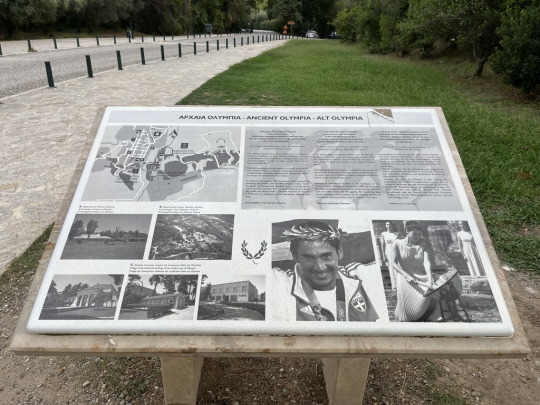
Am Nachmittag komme ich an der antiken Stätte an. Heute gibt es sogar freien Eintritt.
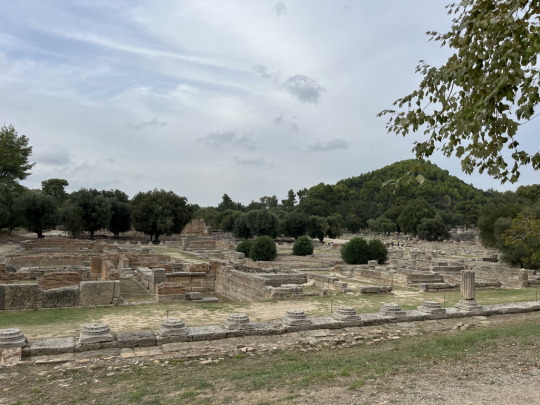

Hier empfängt mich eine grüne Oase, der Fluss ist gesäumt von Schilf und die Büsche blühen. Dann öffnet sich der Blick auf das riesige Areal mit seinen Säulen und Tempelruinen. Die Sonne scheint und ich begebe mich auf meinen Rundgang.




Alles ist gut beschrieben, die vielen Informationen erleichtern die Orientierung und die Vorstellung des ursprünglichen Bauwerkes. Ich komme zunächst zur Palästra, wo sich die Athleten auf die Wettkämpfe vorbereitet haben.

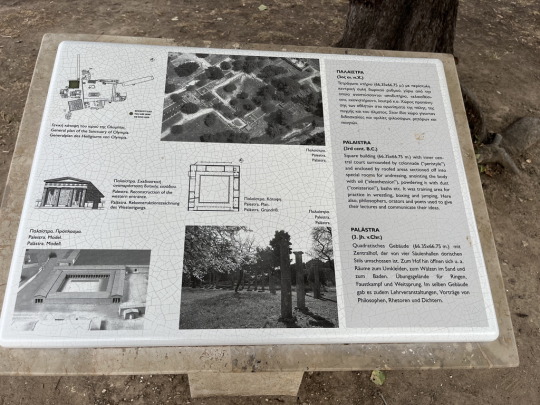
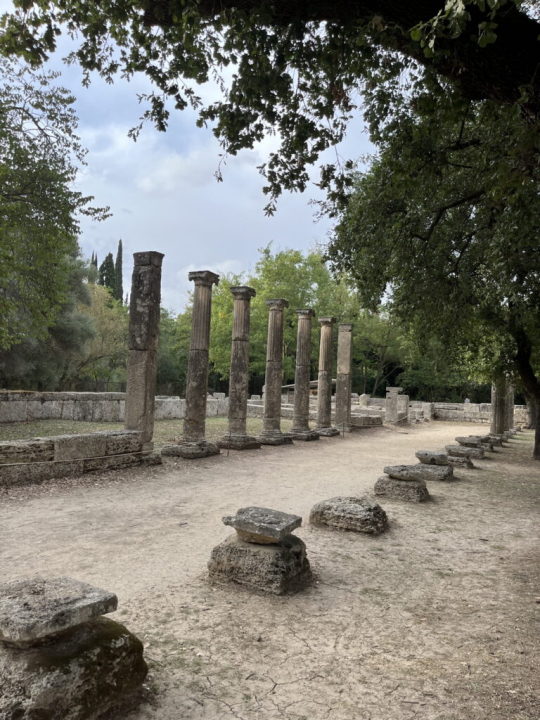
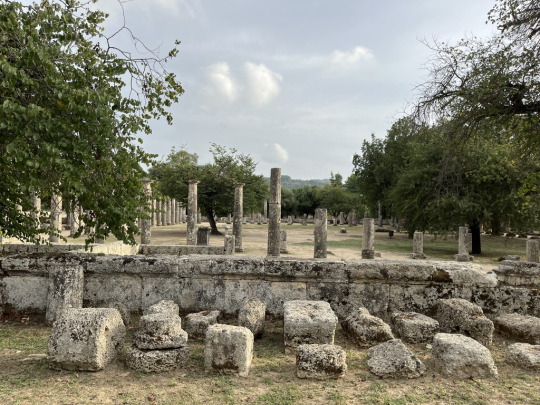
Zwischen all den Säulen und Mauern fühle ich mich recht schnell in eine andere Zeit versetzt und kann ich mir gut vorstellen, wie die Menschen in ihren langen Gewändern durch die Tempel und Hallen geschritten sind.
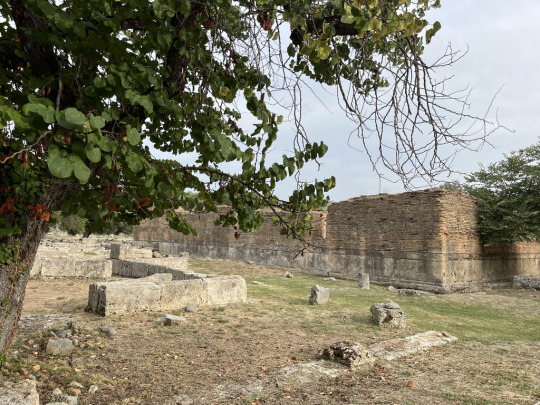

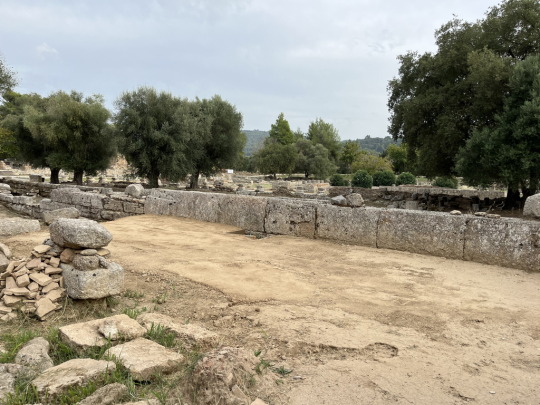



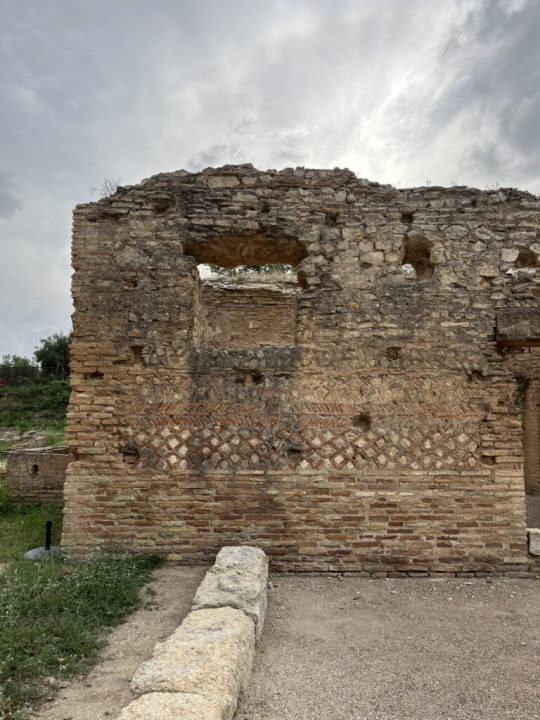


Es ist still hier in der großen Stadt und duftet nach südländischen Bäumen. Dazu ist es angenehm warm. Das Gelände ist fast unüberschaubar, ich komme vorbei an weiteren Tempeln, Gästehäusern mit Brunnen in den Innenhöfen und an Thermen.
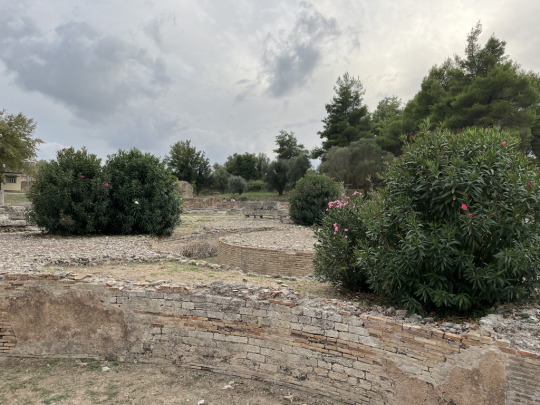
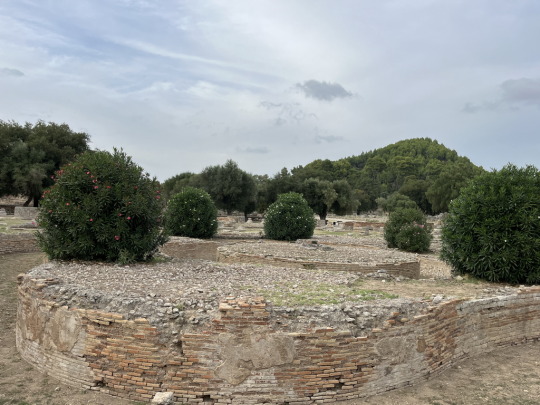
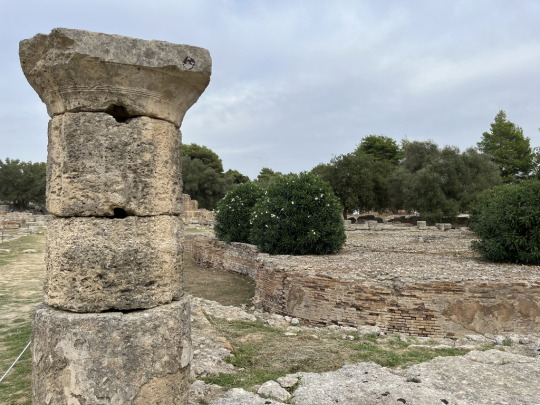
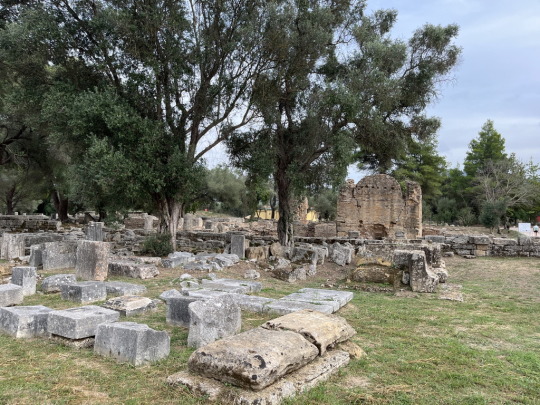

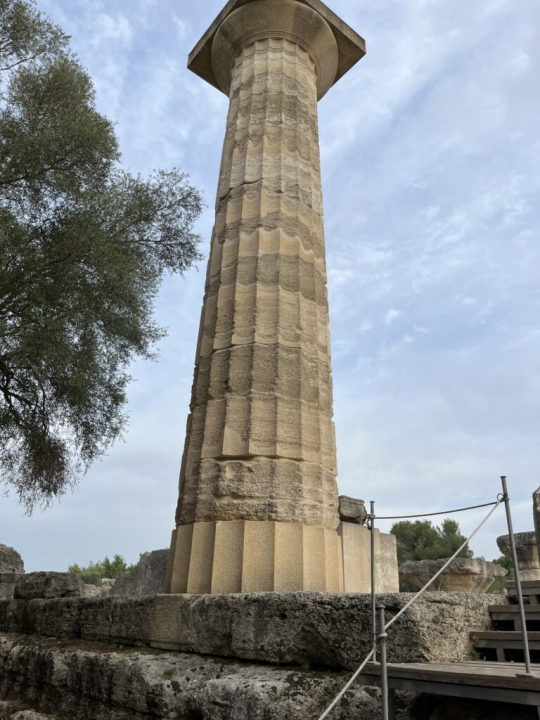

Die Sonne neigt sich langsam und die Stimmung wird immer zauberhafter. Ich suche das Stadion und entdecke schließlich am Rand des Geländes den Eingang. Es sind wenige Besucher unterwegs und ich muss eine Weile warten, bis sich einer der jungen Männer auf die Laufrunde begibt.





Die Wolken verzaubern den Himmel und ich gehe schnell zu den Tempeln zurück.


Wie ich gehofft hatte, kann ich einen Sonnenstrahl über einer der Säulen einfangen. Hier in diesem Gebiet befinden sich das Philippeion und die Monumente des Ptolemäus.




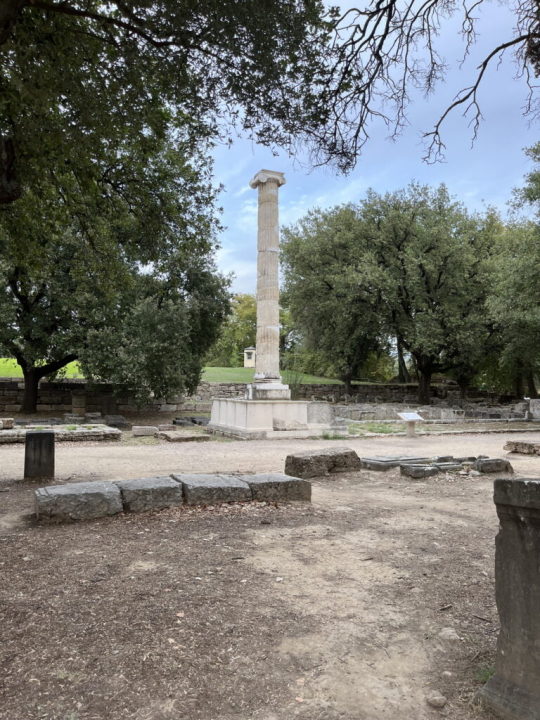
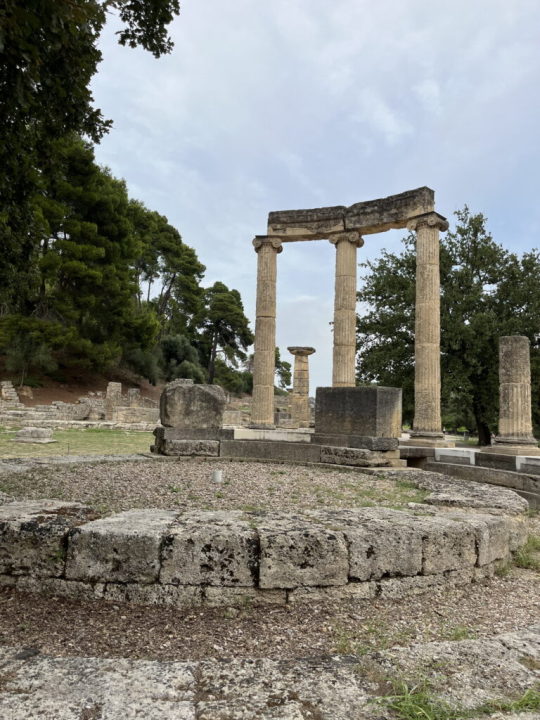
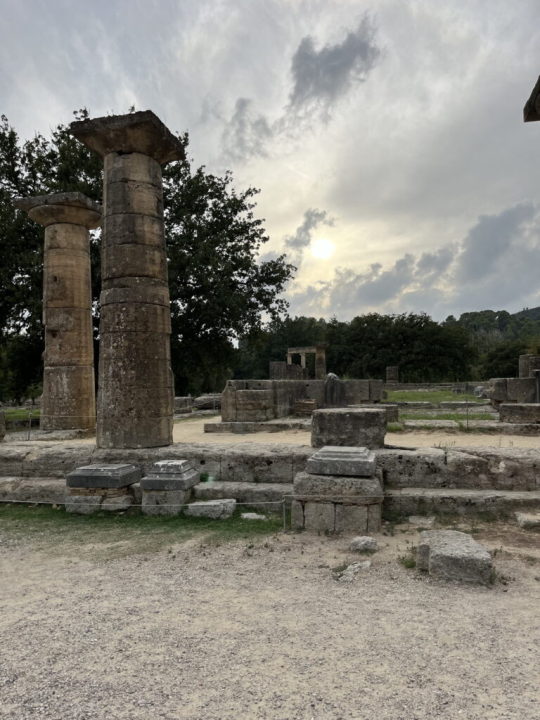

Noch eine Genuss-Runde durch diesen antiken Kurpark, dann begebe ich mich Richtung Ausgang.
Resümee
Die antike Stätte von Olympia mit dem Heiligtum des Zeus hat ihren Zauber, der heute über den Ruinen der Tempel liegt, nicht verloren. Kaum hat man das große Gelände betreten, drehen sich die Epochen wie von selbst zurück. Man sollte auf jeden Fall ausreichend Zeit mitbringen, um mit Muße bei einem ausführlichen Rundgang die Stimmung einfangen und genießen zu können. Wer sich fit genug fühlt, kann eine Laufrunde im weltberühmten Stadion absolvieren. Das Freigelände wird bei Sonnenuntergang geschlossen, die benachbarten Museen mit den Ausgrabungsschätzen haben eine Stunde länger geöffnet. Bei einem Besuch in Olympia kann man einen erholsamen und ungeheuer interessanten Ausflug in die Geschichte erleben.
Ich übernachte gleich nebenan und Olympia verabschiedet sich von mir mit einem fantastischen Sonnenuntergang.

Die gesamte Tour go-south 3.0 ist hier beschrieben. Hier gehts zu meinem Welterbe-Projekt. Der Umbau meines Dacia Dokker als Minicamper ist hier detailliert nachzulesen. Dobbys Einrichtung und Ausstattung hat sich auch in diesem Herbst und seinen Gewittern bewährt. Meine Übernachtungsplätze habe ich wieder auf park4night gesucht und unter 5Reisende bewertet. Die zusammengefassten Länderkarten gibt es hier.
Read the full article
#Abenteuermobil#Abenteuerreise#Albanien#alleinunterwegs#Alleinreisen#Ausbau#Ausrüstung#Autoreise#Besichtigung#BosnienundHerzegowina#Camping#Camping-Mobil#Dacia-Dokker#DIY#Dobby#Erfahrungsbericht#Erkundung#Europa#Hochdach-Kombi#Inspiration#Kroatien#Leichtbau#Minicamper#Montenegro#Olympia#Parkplatz#Reisebericht#Reisefotografie#Reisetagebuch#Reiseziele
0 notes
Text
Cite: The Archeological Site of Olympia
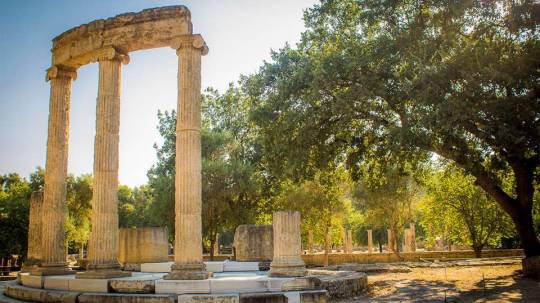
The Archaeological Site of Olympia is an ancient sanctuary located in the western part of the Peloponnese in Greece. It was dedicated to Zeus, the king of the gods, and was home to the ancient Olympic Games, which were held every four years beginning in 776 BCE. Olympia is also home to several ancient structures, including the Temple of Zeus, the Temple of Hera, and the Philippeion. Today, visitors can explore the ruins of the sanctuary and learn about the ancient Olympic Games, which were an important cultural and athletic event in ancient Greece. Reasons to visit the Archaeological Site of Olympia include experiencing the history and culture of Ancient Greece, seeing the impressive ruins of a once-great sanctuary, and learning about the origins of the Olympic Games.
“Ancient Olympia Archeological Site.” Archaeological site of ancient Olympia Greece. Accessed May 1, 2023. http://www.olympia-greece.org/site.html.
“Olympia” VisitGreece. Accessed May 1, 2023.https://www.visitgreece.gr/mainland/peloponnese/olympia/
0 notes
Photo
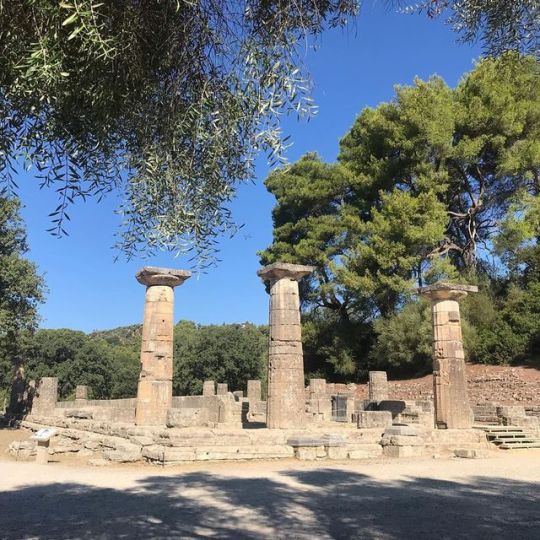
Day 4. Classical Greek Tour Day 2. #Olympia #AncientOlympia #TempleofZeus #Heraion #Philippeion #AncientOlympiaMuseum #GreeceCapade2019 🇬🇷 (at Ancient Olympia) https://www.instagram.com/p/B1b0VGHJgHX/?igshid=lugfjg54m8hy
0 notes
Photo
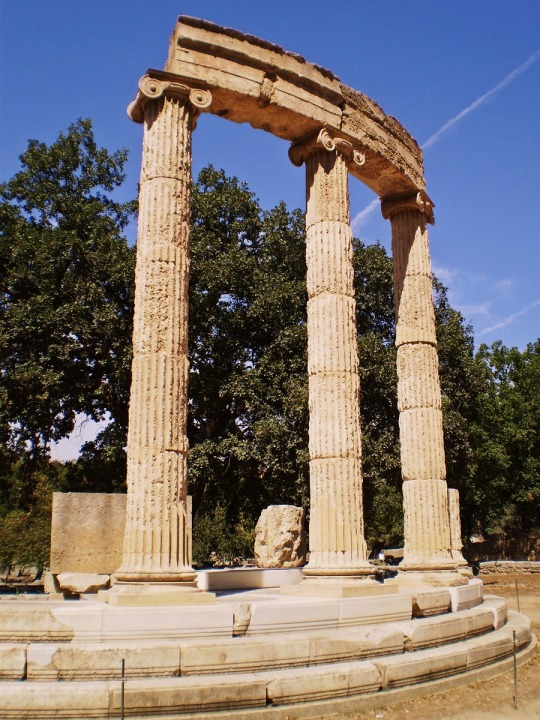
The Philippeion, Olympia, Greece, September 2010
#the philippeion#olympia#ancient greece#memorial#Philip of Macedon#ruins#ancient architecture#my pictures
6 notes
·
View notes
Photo

Fancy workshop. Ancient Olympia, Greece. #workshop #ancient #architecture #olympia #philippeion #ruins #greece (at Ancient Olympia)
0 notes
Text
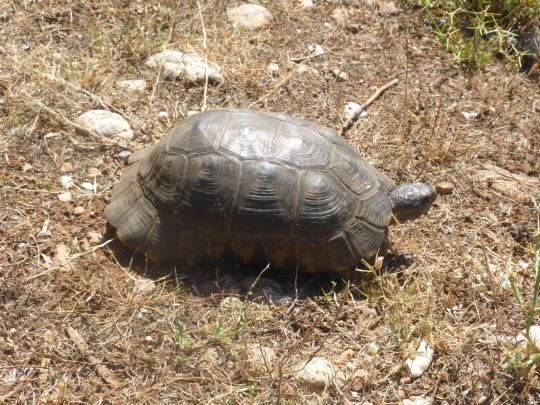


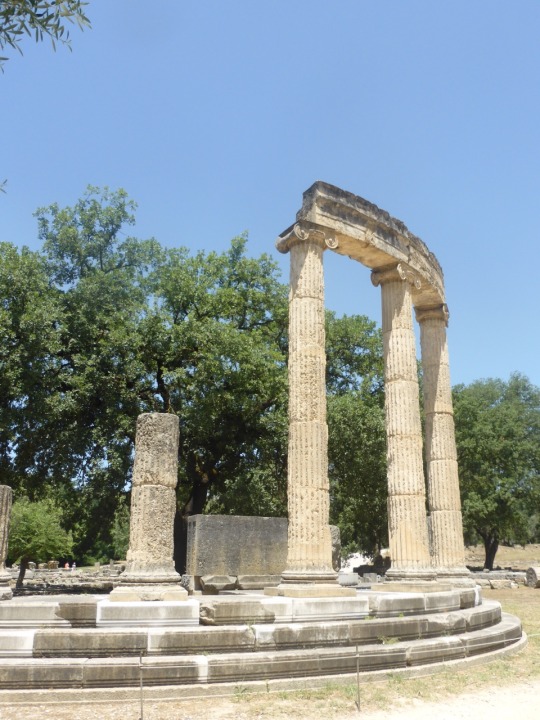

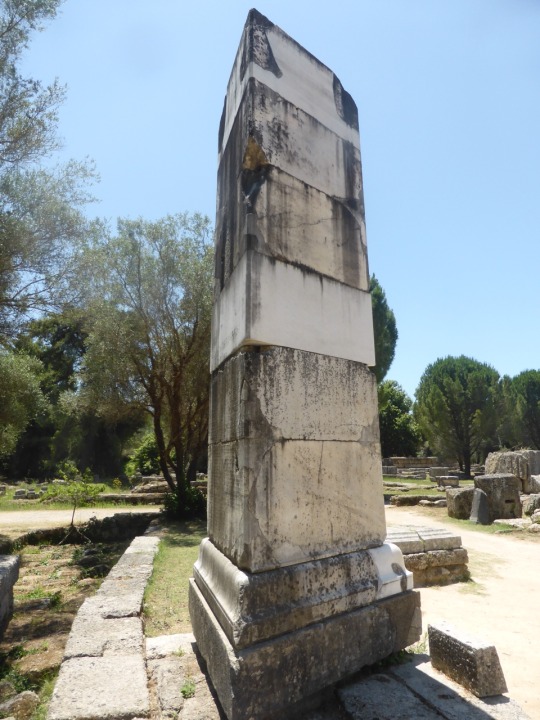

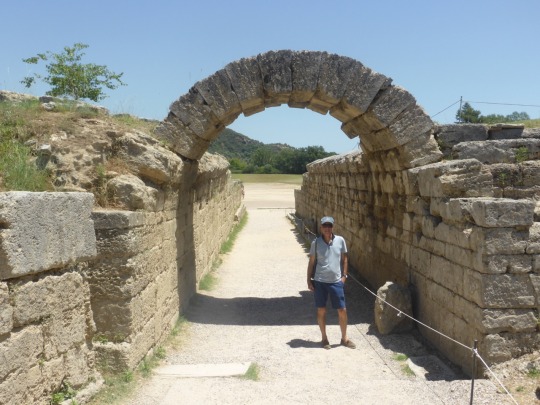
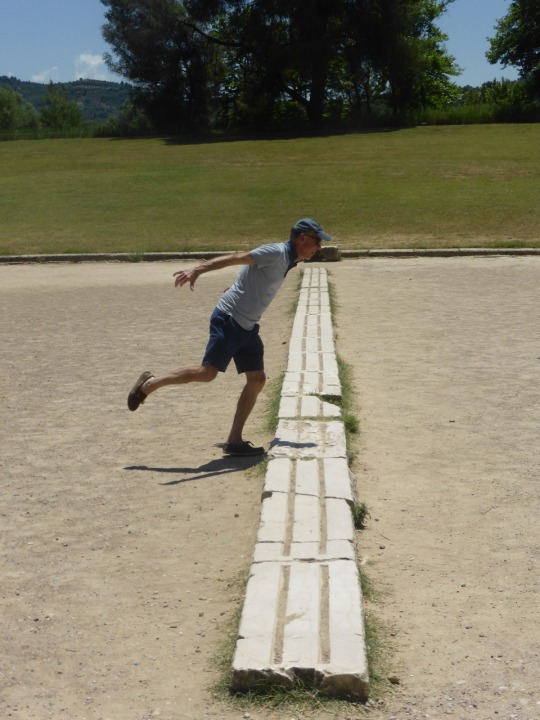
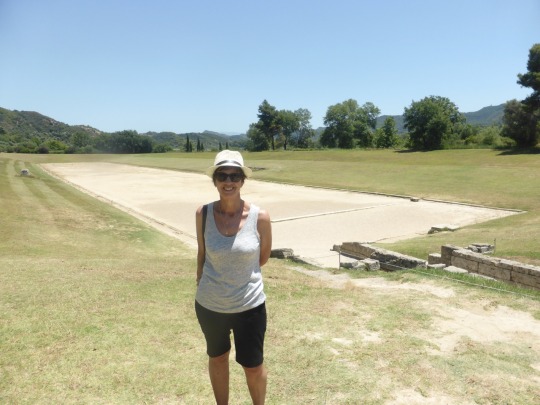
OLYMPIA PELOPONNESE
1. Tortoise was sitting on the road. Stopped the car and moved it to the side.
2. Chris thinking about a workout at the gymnasium
3. Temple of Zeus and the only column restored - a project funded by Germany
4. Philippeion - an altar to Pelops
5. Once the Altar of Hestia where the Olympic flame would have been during the Olympic Games. The site is where the the Olympic flame is still lit.
6. Triangular plinth that one supported the winged statue of Victory 5thC BC
7. Inscriptions engraved on the plinth in approx 135 BC
8. Entrance to the Olympic Stadium
9. Chris breasting the line in his 20 metre sprint
10. The original Olympic stadium.
1 note
·
View note
Photo

(via Ancient Ruins Of The Philippeion At Olympia, Greece Detailed.. Stock Photo, Picture And Royalty Free Image. Image 13127798.)
0 notes
Text
Le Philippeion d’Olympie est un bâtiment rond (une tholos) édifié à l’initiative de Philippe II de Macédoine. Il contenait cinq statues chryséléphantines représentant Philippe lui-même et des membres de sa famille. Ce temple est dans le sanctuaire d’Olympie (Philippe háo đc đứng ngang với các vị thần grecs). Et le Philippeion est 1 hérôon=temple dédié à 1 héros
0 notes
Photo

The Philippeion at Olympia. #olympia #ancientgreece #travelphotography #greece #clayhausphotography #infrared (at Ancient Olympia)
0 notes
Photo
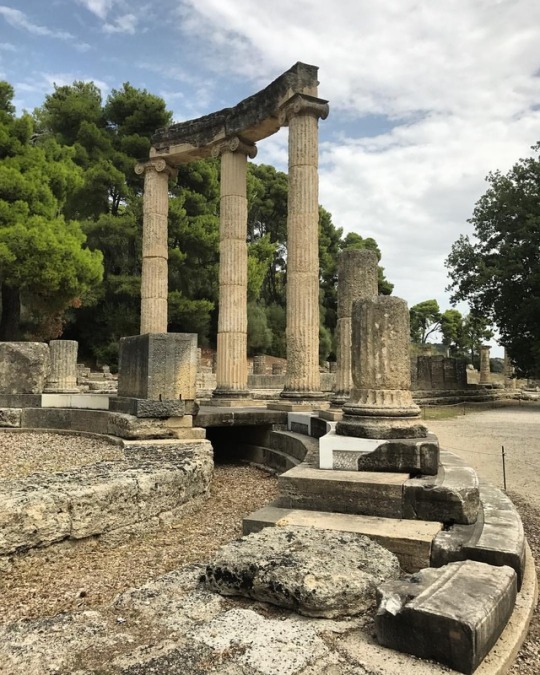
Philippeion. Ancient Olympia, Greece. #ancient #architecture #olympia #philippeion #ruins #greece (at Ancient Olympia)
0 notes
Photo
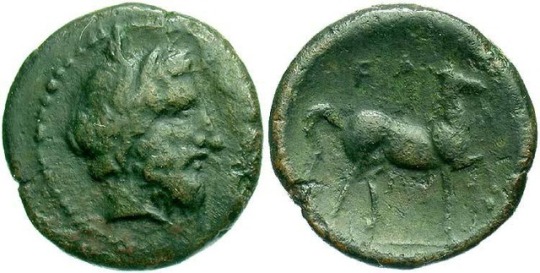
Olympia (Greek: Ολυμπία Olympí'a or Ολύμπια Olýmpia, older transliterations, Olimpia, Olimbia), a sanctuary of ancient Greece in Elis, is known for having been the site of the Olympic Games in classical times, comparable in importance to the Pythian Games held in Delphi. Both games were held every olympiad (i.e. every four years), the Olympic Games dating back possibly further than 776 BC. In 394 emperor Theodosius I, or possibly his grandson Theodosius II in 435, abolished them because they were reminiscent of paganism. The sanctuary itself consists of an unordered arrangement of various buildings. To the north of the sanctuary can be found the prytaneion and the Philippeion, as well as the array of treasuries representing the various city states. The metroon lies to the south of these treasuries, with the Echo Stoa to the East. To the south of the sanctuary is the South Stoa and the Bouleuterion, whereas the West side houses the palaistra, the workshop of Pheidias, the Gymnasion and the Leonidaion. Enclosed within the temenos are the temples of Hera and Zeus, the Pelopion and the area of the altar, where the sacrifices were made. The hippodrome and later stadium were also to the East. Olympia is also known for the gigantic ivory and gold statue of Zeus that used to stand there, sculpted by Pheidias, which was named one of the Seven Wonders of the Ancient World by Antipater of Sidon. Very close to the temple of Zeus (see photo of ruins below) which housed this statue, the studio of Pheidias was excavated in the 1950s. Evidence found there such as sculptor's tools, corroborates this opinion. Excavation of the Olympia temple district and its surroundings began with a French expedition in 1829. German archaeologists continued the work in the latter part of the 19th century. The latter group uncovered, intact, the Hermes of Praxiteles statue, among other artifacts. In the middle of the 20th Century, the stadium where the running contests took place was excavated. The Olympic flame of the modern-day Olympic Games is lit by reflection of sunlight in a parabolic mirror at the restored Olympia stadium and then transported by a torch to the place where the games are held. When the modern Olympics came to Athens in 2004, the men's and women's shot put competition was held at the restored stadium. The ancient ruins sits north of the Alfeios River and lies next to Cronius or Kronios hill (the hill of Kronos, or Saturn). Kladeos, a tributary of Alfeios, flows around the area. The town has a school and a square (plateia). Tourism is popular throughout the late-20th century. The city has a train station and is the easternmost terminus of the line of Olympia-Pyrgos (Ilia). The train station which the freight yard is west of it is about 300 m east of the town centre. It is linked by GR-74 and the new road was opened in the 1980s, the next stretch N and NE of Olympia will open in around 2005. Distance from Pyrgos is 20 km E(old: 21 km), about 50 km SW of Lampeia, W of Tripoli and Arcadia and 4 km north of Krestena and N of Kyparissia and Messenia. The highway passed north of the ancient ruins. A reservoir is located 2 km southwest damming up the Alfeios river and has a road from Olympia and Krestena which in the late-1990s has been closed. The area is hilly and mountainous, most of the area within Olympia is forested. Elis, Olympia. After ca. 340/30-late 3rd century B.C. Æ unit (20 mm, 5.99 g). Laureate head of Zeus right / FA above, horse trotting right; [L]U below. BCD 339.3 (this coin). Near VF, dark brown patina. Ex BCD Collection. Ex-John C Lavender
0 notes
